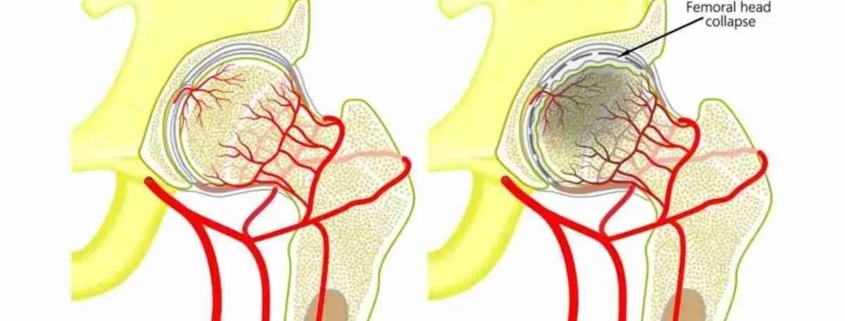
Avascular Necrosis of the Hip
Overview: Avascular Necrosis of the Hip
Avascular necrosis, also known as osteonecrosis, refers to the death of bone tissue due to a lack of blood supply. Often affecting the hip, it can lead to severe pain and loss of joint mobility. This condition is more common in adults aged 30 to 60 and is estimated to affect around 10,000 to 20,000 Americans each year.
Types: Avascular Necrosis
While Avascular Necrosis can occur in any bone, it most commonly affects the hip. It is classified into two main types based on its cause:
-
- Traumatic Avascular Necrosis: Often occurs after an injury or damage to the blood vessels leading to the joint.
-
- Non-Traumatic Avascular Necrosis: Linked to systemic diseases or conditions that can block blood flow to the bones.
Causes: Avascular Necrosis of the Hip
Several factors may lead to the development of avascular necrosis. These include:
-
- Long-term use of corticosteroids
-
- Excessive alcohol consumption
-
- High-pressure environments, such as in deep-sea diving
-
- Sickle cell disease
-
- Lupus
-
- Decompression disease
-
- Direct trauma to the bone or joint
Symptoms: Avascular Necrosis
In the early stages, avascular necrosis often presents no symptoms. As the condition progresses, individuals might experience:
-
- Pain in the hip, often only on one side
-
- Difficulty moving or walking
-
- Joint stiffness
-
- Chronic pain, increasing over time
Diagnosis: Avascular Necrosis
Diagnosis begins with a thorough physical examination. If avascular necrosis is suspected, imaging tests such as X-rays, MRI or bone scans may be ordered to assess bone damage. In some cases, a biopsy of the bone may be required for definitive diagnosis.
Treatment Options: Avascular Necrosis
Treatment options may be conservative or surgical, based on the severity of the condition.
Conservative Treatments:
-
- Physical therapy
-
- Nonsteroidal anti-inflammatory medications
-
- Reducing weight-bearing on the affected joint
-
- Medication to enhance bone strength and slow bone loss
Surgical Treatments:
-
- Joint replacement surgery
-
- Core decompression: removing a portion of the bone to relieve pressure and increase blood flow
-
- Bone graft: replacing damaged bone with healthy tissue from another part of the body
-
- Osteotomy: surgery to reposition the bone to correct deformity and improve alignment
Living With Avascular Necrosis of the Hip
Living with avascular necrosis requires implementing certain lifestyle changes, such as:
-
- Limit alcohol consumption
-
- Quit smoking
-
- Maintain a healthy diet
-
- Regular exercise to maintain joint flexibility
-
- Follow prescribed medication regimen
-
- Attend regular follow-up appointments with your doctor
When to Seek Help
Immediate medical attention should be sought if you experience severe joint pain, difficulty in moving or walking, or if your symptoms worsen even after conservative treatment. The earlier avascular necrosis is diagnosed, the more effective the treatment can be in delaying or preventing joint destruction.
